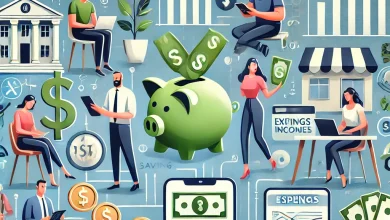The Future of Blockchain: Beyond Cryptocurrencies
Introduction
Blockchain technology is widely associated with cryptocurrencies like Bitcoin and Ethereum. However, its potential extends far beyond digital currencies. In recent years, industries such as finance, healthcare, supply chain management, and real estate have begun leveraging blockchain’s decentralized and secure nature to enhance transparency, security, and efficiency.
As we move into 2025 and beyond, blockchain is set to revolutionize multiple sectors, changing how we conduct business, secure data, and manage digital identities. In this article, we will explore the future of blockchain technology, its applications beyond cryptocurrencies, and how it is shaping the digital world.
What is Blockchain Technology?
Blockchain is a decentralized, distributed ledger system that records transactions across multiple computers. Once data is recorded, it cannot be altered without the consensus of the network, making it highly secure and transparent.
🔹 Key Features of Blockchain:
✅ Decentralization – Eliminates the need for intermediaries like banks and governments.
✅ Transparency – Transactions are recorded on a public ledger, ensuring accountability.
✅ Security – Advanced cryptographic techniques protect data from tampering.
✅ Efficiency – Automates processes, reducing costs and increasing transaction speeds.
With these advantages, blockchain has expanded beyond finance to impact various industries.
Applications of Blockchain Beyond Cryptocurrencies
1. Supply Chain Management
Enhancing Transparency and Efficiency
Blockchain is transforming global supply chains by improving traceability, reducing fraud, and ensuring product authenticity. Companies like IBM and Walmart use blockchain to track product movements in real time, preventing counterfeiting and inefficiencies.
🔹 Example: IBM’s Food Trust Blockchain allows consumers to trace food origins, ensuring food safety and reducing contamination risks.
2. Healthcare Industry
Securing Patient Data and Medical Records
Healthcare organizations are leveraging blockchain to store and share patient records securely. Traditional medical data systems are prone to breaches, but blockchain ensures data integrity and patient privacy.
🔹 Example: MedicalChain uses blockchain to create a secure and decentralized database for medical records, giving patients full control over their health data.
3. Digital Identity Verification
Preventing Identity Theft and Fraud
Identity theft is a major global issue. Blockchain provides a tamper-proof digital identity system that enhances security while giving users control over their personal data.
🔹 Example: Microsoft’s ION project, built on Bitcoin’s blockchain, enables self-sovereign identity, allowing individuals to control their digital identities without relying on centralized institutions.
4. Smart Contracts and Legal Automation
Reducing Costs and Enhancing Trust
Smart contracts are self-executing agreements with conditions written into code. These contracts execute automatically when predefined conditions are met, eliminating the need for intermediaries like lawyers or notaries.
🔹 Example: Ethereum’s blockchain enables smart contracts, automating transactions in industries like real estate, insurance, and intellectual property rights.
5. Decentralized Finance (DeFi)
Transforming Traditional Financial Services
DeFi is one of the biggest blockchain revolutions, offering an open-source alternative to traditional banking. Users can lend, borrow, trade, and earn interest on digital assets without centralized financial institutions.
🔹 Example: Platforms like Aave and Compound allow users to earn interest on crypto holdings and take out loans without credit checks.
6. Gaming and NFTs (Non-Fungible Tokens)
Empowering Digital Ownership
Blockchain has changed the gaming industry by enabling true ownership of in-game assets through NFTs. Gamers can buy, sell, and trade virtual goods across multiple platforms securely.
🔹 Example: Axie Infinity and Decentraland use blockchain to create decentralized virtual economies where players can earn real-world value.
7. Real Estate Transactions
Reducing Fraud and Enhancing Efficiency
Real estate transactions involve multiple parties, paperwork, and fraud risks. Blockchain streamlines transactions by providing transparent property records and automated smart contracts.
🔹 Example: Propy uses blockchain to enable secure, digital real estate transactions, reducing paperwork and preventing fraudulent property deals.
8. Government and Voting Systems
Ensuring Fair and Transparent Elections
Blockchain-based voting systems can eliminate election fraud, enhance voter participation, and ensure transparent results.
🔹 Example: The West Virginia blockchain voting pilot allowed military personnel to vote securely from overseas, proving blockchain’s potential in elections.
9. Intellectual Property and Copyright Protection
Protecting Digital Content Creators
Artists, writers, and musicians often struggle with copyright infringement. Blockchain ensures provable ownership and transparent licensing for digital content.
🔹 Example: Platforms like Audius and OpenSea allow creators to sell music and digital art while maintaining full ownership rights.
10. Cloud Storage and Cybersecurity
Enhancing Data Protection
Traditional cloud storage services are centralized, making them vulnerable to hacking. Blockchain-based cloud storage distributes data across multiple nodes, improving security and reliability.
🔹 Example: Filecoin and Sia provide decentralized cloud storage, reducing the risk of data breaches.
Challenges and Limitations of Blockchain Adoption
Despite its potential, blockchain faces several challenges:
- Scalability Issues – Some blockchains struggle with processing large numbers of transactions per second.
- Regulatory Uncertainty – Governments worldwide are still formulating policies regarding blockchain applications.
- Energy Consumption – Proof-of-work (PoW) blockchains like Bitcoin require significant energy.
- Adoption Barriers – Businesses and users need education and infrastructure to integrate blockchain effectively.
However, solutions like proof-of-stake (PoS), sharding, and regulatory frameworks are being developed to address these challenges.
The Future of Blockchain Technology
🚀 What’s next for blockchain?
✅ Cross-Industry Collaboration – More industries will adopt blockchain for secure transactions and data management.
✅ Green Blockchain Solutions – Adoption of energy-efficient blockchain protocols (e.g., Ethereum 2.0).
✅ Interoperability – Blockchains will become more interconnected, allowing seamless data exchange.
✅ Government Integration – More governments will explore blockchain for digital identity, taxation, and governance.
✅ Mainstream Adoption of Decentralized Finance (DeFi) – DeFi will continue replacing traditional banking services.
Blockchain is poised to reshape industries beyond cryptocurrencies, driving a new era of transparency, security, and efficiency.
Conclusion
The future of blockchain extends far beyond Bitcoin and other digital currencies. From healthcare and supply chain management to DeFi and digital identities, blockchain is disrupting multiple industries.
As technology advances, blockchain adoption will continue to expand, providing secure, transparent, and decentralized solutions for businesses and consumers alike.
💡 Are you ready for the blockchain revolution? Share your thoughts in the comments!
📩 Subscribe to Tech Financial Idea for more insights on technology and finance!




